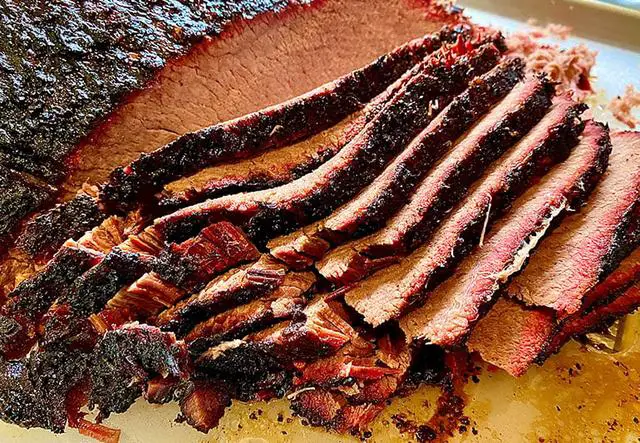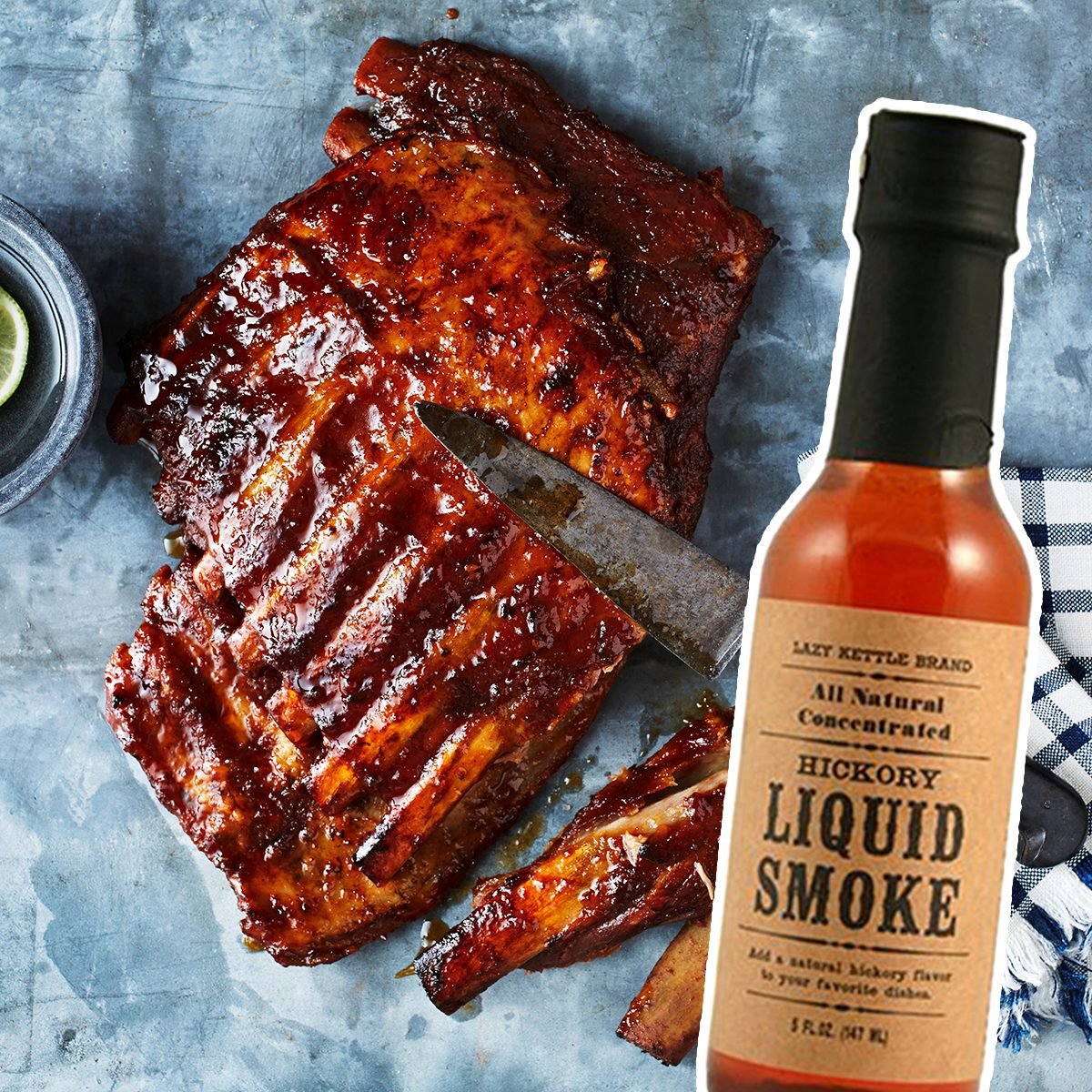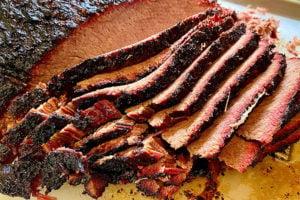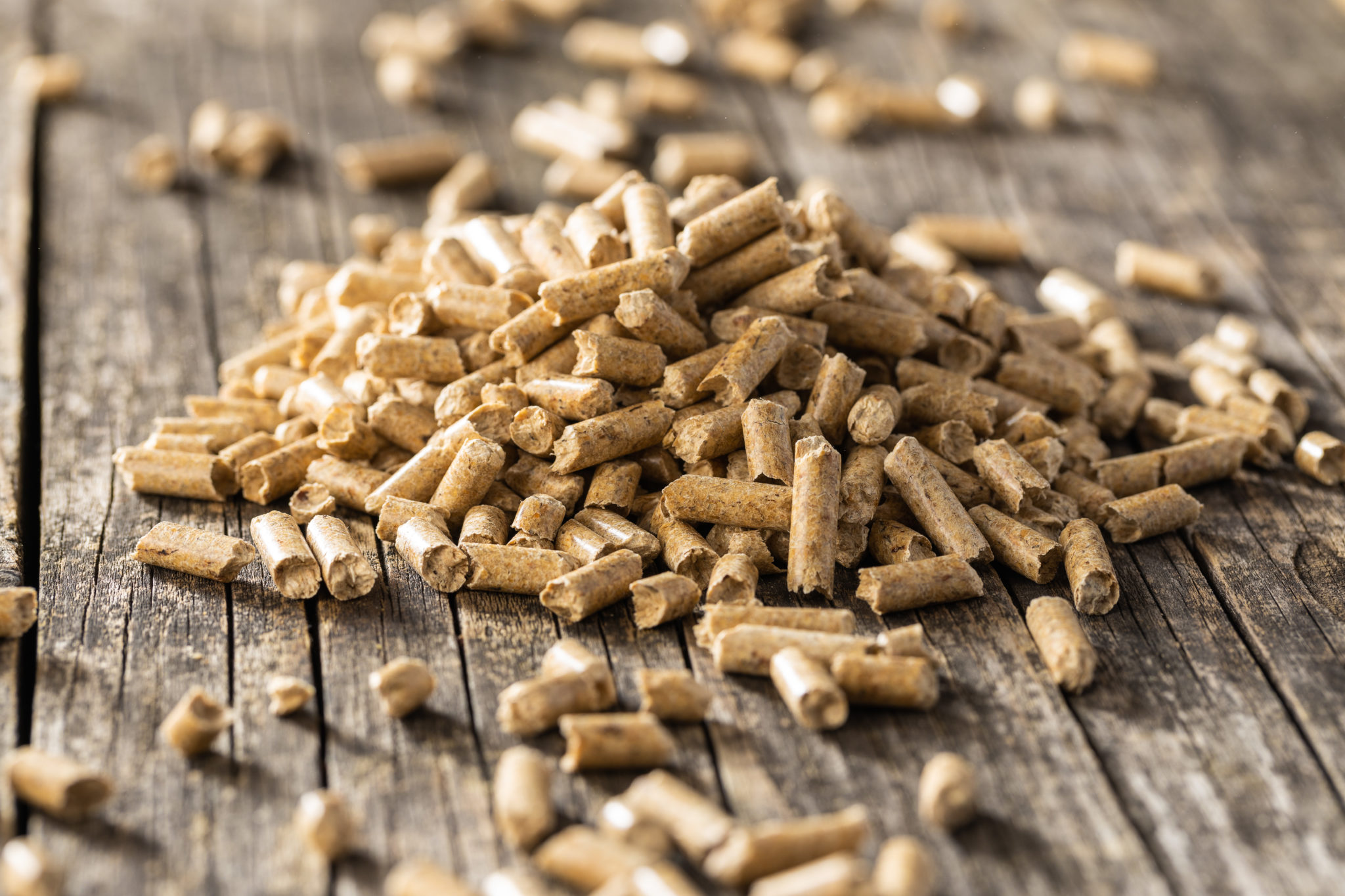
“Unraveling the Truth: Is Smoked Meat Harmful to Your Health? Exploring the Potential Risks and Benefits of Consuming Smoked Meat.”
What types of food are you smoking?
When it comes to smoked foods, the type of food being smoked plays a role in the health risks associated with consumption. Some popular meats used for smoking, such as pork butt or beef brisket, are higher in fat, calories, and salt. Processed meats like hot dogs and sausage are high in salt, nitrates, and other food chemicals linked to health problems. Consuming 50 grams of processed meat a day can increase the risk of colorectal cancer by 18%. However, this doesn’t mean you have to completely give up smoking meat. It’s important to create a balance between the food you’re smoking and how often you consume them.
Wood smoke contains over 300 compounds, with levels varying depending on factors such as the type of wood used, wood moisture, size of the wood, and smoking process. Two main types of chemicals associated with grilling and smoked foods are polycyclic aromatic hydrocarbons (PAHs) and heterocyclic amines (HCAs). PAHs form when juices and fat from meat drip into the fire, causing flames and smoke that attach to the meat. HCAs, on the other hand, are only found in meat cooked at high temperatures. Cooking methods for smoking foods typically involve longer cooking times with lower temperatures, resulting in lower levels of HCAs. The phenols found in wood smoke contribute most of the flavor and preservation properties.
Studies conducted on animals have shown that exposure to PAHs may increase the risk of various cancers including tumors, leukemia, breast cancer, colon cancer, and prostate cancer. However, it’s important to note that these studies often involved feeding rodents very high amounts of PAHs and HCAs, much more than a person would typically consume. Human-based studies have yet to establish a direct link between PAHs and cancer in humans. Determining the exact level of PAHs in smoked foods is a challenge, as it requires detailed information about cooking techniques and individual variations in metabolizing PAHs. It’s also worth noting that exposure to PAHs can occur from other sources such as cigarette smoke.
How much smoked food can you consume?
The amount of smoked food you can consume depends on several factors, including the type of food and how often you eat it. While some meats used for smoking, such as pork butt or beef brisket, are higher in fat, calories, and salt, it doesn’t mean you have to completely give up smoking meat. It’s about finding a balance between the foods you smoke and how often you consume them.
Wood smoke contains over 300 compounds, including polycyclic aromatic hydrocarbons (PAHs) which are formed when juices and fat from meat drip into the fire. However, smoked foods don’t have significant amounts of another type of chemical called heterocyclic amines (HCAs), which are only found in meat cooked at high temperatures.
Currently, there is limited evidence linking PAHs to cancer in humans. Most studies have been conducted on rodents fed high amounts of PAHs and HCAs. Each person metabolizes PAHs differently, so even if they consume the same compounds, they may not have the same cancer risk. It’s also important to note that exposure to PAHs can come from other environmental sources like cigarette smoke.
Health effects of wood smoke
Wood smoke contains over 300 compounds, including polycyclic aromatic hydrocarbons (PAHs) and heterocyclic amines (HCAs). PAHs are formed when juices and fat from meat drip into the fire, causing flames and smoke. HCAs are only found in meat that is cooked at high temperatures. While smoked foods don’t have significant amounts of HCAs, they may contain PAHs which have been shown to increase cancer risk in animal subjects.
Studies conducted on rodents fed a diet high in PAHs have shown that these compounds can lead to the development of tumors, leukemia, breast cancer, colon cancer, and prostate cancer. However, human-based studies have yet to establish a direct link between PAHs and cancer in humans. One challenge is determining the exact level of PAHs in smoked foods as exposure levels vary based on cooking techniques and individual metabolism.
To make smoked recipes healthier, it is recommended to choose leaner meats or opt for smoking fish which is low in fat but high in omega-3 fatty acids and other nutrients. Smoking fruits and vegetables can also provide a smoky flavor without the health risks associated with meat. It’s important to avoid charring or burning foods when smoking as this can increase the formation of carcinogenic compounds. Additionally, portion control and proper food handling are important factors for maintaining overall health while enjoying smoked foods.
Polycyclic aromatic hydrocarbons found in smoked wood
Smoked wood contains polycyclic aromatic hydrocarbons (PAHs), which are chemical compounds that form when juices and fat from meat drip into the fire, causing flames and smoke. These PAHs then attach to the meat being smoked. However, it is important to note that the levels of PAHs depend on various factors such as the type of wood used, wood moisture, the size of the wood, and the smoking process.
Studies conducted on rodents fed a diet high in PAHs have shown that exposure to these compounds may increase the risk of various cancers such as tumors, leukemia, breast cancer, colon cancer, and prostate cancer. However, it is worth mentioning that these rodents were fed significantly higher amounts of PAHs than what a person would typically consume in their regular diet.
While there is evidence suggesting a potential link between PAH exposure and cancer in animals, human-based studies have yet to establish a direct connection between PAHs and cancer in humans. One challenge in determining this link is accurately measuring the exact level of PAHs in smoked foods and accounting for individual differences in how people metabolize these compounds. Additionally, individuals can also be exposed to PAHs from other environmental sources such as cigarette smoke.
Phenols and flavor
Phenols are compounds found in wood smoke that contribute to the distinct flavor and preservation properties of smoked foods. These compounds are responsible for creating the desirable smoky taste that many people enjoy. Unlike polycyclic aromatic hydrocarbons (PAHs), there is currently little evidence to suggest that phenols have the same harmful effects on DNA and cells. Therefore, a food with a low PAH content and a desirable smoke flavor from phenolic compounds would be ideal.
What evidence is there that PAHs in smoked foods increases cancer risk?

Studies have shown that exposure to polycyclic aromatic hydrocarbons (PAHs) may increase the risk of cancer in animal subjects. Rodents fed a diet high in PAHs and heterocyclic amines (HCAs) developed tumors, leukemia, breast cancer, colon cancer, and prostate cancer. However, human-based studies have yet to establish a direct link between PAHs and cancer in humans. One challenge in determining the exact level of PAHs in smoked foods is the variation in individual metabolism and exposure levels. Additionally, other environmental sources such as cigarette smoke can also contribute to PAH exposure. Currently, there are no specific guidelines for foods containing PAHs.
Wood smoke contains over 300 compounds, including aromatic hydrocarbons like PAHs. These compounds form when juices and fat from meat drip into the fire during smoking. While smoked foods do not have significant amounts of HCAs (which are only found in meat cooked at high temperatures), the presence of PAHs raises concerns about potential health risks. The phenols found in wood smoke provide flavor and preservation properties but do not have the same reactions on DNA and cells as PAHs. Ideally, smoked foods would have desirable smoke flavor from phenolic compounds while having low PAH content.
Sodium Content in Smoked Foods
Smoked foods, particularly processed meats like hot dogs and sausage, tend to have high levels of sodium. Consuming too much sodium can increase the risk of high blood pressure, cardiovascular disease, and kidney diseases. It is important to balance high sodium foods with low sodium options in the same meal to manage your sodium intake. For individuals with chronic conditions like high blood pressure, it may be necessary to limit the consumption of smoked foods.
What about liquid smoke flavoring?

Liquid smoke is a byproduct of burning wood and is used to add the flavor of smoked wood to foods without the use of a grill or smoker. It is made by filtering smoke mixed with water, and it does not add any calories or fat to the food. While liquid smoke itself does not have a high sodium content, some brands may add other ingredients that increase the sodium levels, so it’s important to read labels carefully. There is a possibility that liquid smoke flavoring products may contain polycyclic aromatic hydrocarbons (PAHs), although the levels are generally lower compared to traditional smoking methods.
Making Smoked Foods Healthier
When it comes to making smoked foods healthier, there are several tips and strategies you can follow. First, consider the type of food you’re smoking. Opt for leaner meats like fish, which are high in omega-3 fatty acids and other beneficial nutrients. You can also smoke fruits and vegetables to add a smoky flavor without the health risks associated with fatty meats.
Next, be mindful of how you cook your smoked foods. Avoid charring or burning them, as this can create additional carcinogenic compounds. Remove excess fat from the meat before smoking to reduce the amount of polycyclic aromatic hydrocarbons (PAHs) that form when fat drips onto the heat source. Clean your smoker before and after each use to prevent leftover food residue from adding more PAHs to your dishes.
Lastly, portion control is key. Use smaller plates to reduce overeating and stick to recommended serving sizes for proteins. Experiment with different types of smokers and cooking methods to find ones that minimize PAH formation. Gas grills tend to produce fewer PAHs than charcoal grills, and controlling smoke exposure during cooking is important for reducing PAH levels in your smoked foods.
Choose your foods with health in mind.
Smoked foods can be enjoyed as part of a healthy diet, but it’s important to consider the type of food you’re smoking. Processed meats like hot dogs and sausage, which are high in salt and other food chemicals, have been associated with health problems including an increased risk of colorectal cancer. However, this doesn’t mean you have to give up smoked meat altogether. It’s all about finding a balance between the foods you smoke and how often you consume them.
Wood smoke contains over 300 compounds, including polycyclic aromatic hydrocarbons (PAHs), which can attach to the meat during smoking. While studies have shown that exposure to high levels of PAHs may increase cancer risk in animal subjects, there is currently little evidence linking PAHs to cancer in humans. The exact level of PAHs in smoked foods is difficult to determine and can vary based on cooking techniques and individual metabolism. However, it’s important to note that exposure to PAHs can also occur from other sources such as cigarette smoke.
Smoked meats often contain high levels of sodium, which can contribute to health problems like high blood pressure and cardiovascular disease. If you’re managing a chronic disease like high blood pressure, it’s important to limit your intake of smoked foods and balance them with low-sodium options like vegetables or fruit. Be aware that some brands of liquid smoke may also add extra sodium, so read labels carefully.
To make smoked recipes healthier, consider smoking fish instead of red meats or high-fat foods. Fish is a low-fat protein source rich in omega-3 fatty acids and other nutrients. Smoking fruits and vegetables like mushrooms, zucchini, potatoes, corn, and asparagus can also provide a satisfying smoked flavor without the potential health risks associated with smoked meats. Additionally, avoid charring or burning foods when smoking, as this can increase the formation of carcinogenic compounds.
Use lower temperatures.
One way to reduce the risk of PAHs in smoked foods is to use lower cooking temperatures. PAHs are formed when juices and fat from meat drip into the fire, causing flames and smoke. By cooking at lower temperatures, you can minimize the formation of PAHs and reduce your exposure to these harmful compounds.
The type of food you’re smoking can also impact the level of PAHs. Meats that are higher in fat, such as pork butt or beef brisket, tend to produce more drippings and therefore more smoke. Opting for leaner cuts of meat can help reduce the amount of PAHs in your smoked foods.
Residue from previous cookings can build up on the grates of your smoker and contribute to the formation of PAHs. It’s important to clean your smoker before and after each use to remove any leftover food or residue. This will help ensure that your smoked foods are as safe as possible.
Avoid charring and burning foods.
When smoking or barbecuing foods, it is important to avoid charring and burning them. High temperatures and burnt pieces of food can contain additional carcinogenic compounds that are associated with different types of cancers. To prevent this, make sure to cook your food at the appropriate temperature and remove any extra fat from the meat before smoking. Also, be mindful of how long you should smoke the food according to the smoker’s manual and recipe. By avoiding charring and burning, you can reduce your exposure to harmful compounds and enjoy healthier smoked dishes.
Watch serving sizes.
When consuming smoked foods, it’s important to pay attention to portion sizes. Evidence suggests that the size of your plate and serving utensils can unconsciously influence how much food you eat. To prevent overeating, consider using smaller plates and serving yourself a palm-sized amount of high-protein foods, such as smoked meats. Start with this serving size and only go back for more if you’re still hungry. By being mindful of your portions, you can enjoy the unique flavor of smoked dishes while maintaining a healthy diet.
Instead of always smoking red meats or high-fat foods, try incorporating healthier options into your smoking repertoire. Smoking fish is a great choice, as it is low in fat and calories while being high in omega-3 fatty acids, vitamin D, calcium, iron, and potassium. The American Heart Association recommends eating fish at least two times per week. Additionally, you can smoke fruits and vegetables to satisfy your smoked flavor desires. Some healthy choices include mushrooms, zucchini, potatoes, corn, and asparagus. By choosing these healthier alternatives, you can still enjoy the delicious taste of smoked foods without compromising your health.
When smoking or barbecuing foods, it’s important to avoid charring and burning them. Higher temperatures and burnt pieces of food can lead to the formation of additional carcinogenic compounds that are associated with certain types of cancers. To minimize this risk, make sure to cook your food at appropriate temperatures and remove any extra fat from meat before smoking it. It’s also crucial to clean your smoker before and after each use to prevent leftover food or residue from adding more harmful compounds during the cooking process.
Pay attention to your smoker.
When it comes to smoked foods, the type of smoker you use and how you use it can greatly impact the health risks associated with consuming smoked foods. Different types of smokers heat foods differently, and choosing a gas grill over a charcoal grill can decrease the amount of polycyclic aromatic hydrocarbons (PAHs) in your food. It’s also important to have control over the smoke and to avoid charring or burning the food, as these actions can increase the formation of carcinogenic compounds. Additionally, keeping your smoker clean before and after each use is crucial for minimizing any leftover food or residue that could contribute to unhealthy smoke.
The type of food you choose to smoke also plays a role in the health risks associated with smoked foods. Some popular meats used for smoking, such as pork butt or beef brisket, are higher in fat, calories, and salt. Processed meats like hot dogs and sausages are high in salt and other chemicals associated with health problems. Consuming excessive amounts of processed meat has been linked to an increased risk of colorectal cancer. To make smoked recipes healthier, consider smoking fish instead of red meats or high-fat foods. Fish is a low-fat protein source that is rich in omega-3 fatty acids and other essential nutrients.
While there may be potential health risks associated with consuming smoked foods due to the presence of PAHs, it’s all about balance. It’s not necessary to completely give up smoked foods but rather focus on creating balance between the types of food you’re smoking and how often you’re consuming them. Incorporate low-sodium options like vegetables or fruits into your meals alongside smoked meats. Pay attention to portion sizes as well, as excessive consumption of smoked foods can contribute to weight gain and other health issues. By being mindful of your choices and maintaining a balanced diet, you can enjoy the unique flavors of smoked dishes while still prioritizing your health.
Final Word

In conclusion, while there is evidence that consuming smoked foods can increase the risk of certain health problems, such as colorectal cancer, it is important to consider various factors. The type of food being smoked, portion sizes, and frequency of consumption all play a role in determining the potential health risks. Additionally, the levels of polycyclic aromatic hydrocarbons (PAHs) in smoked foods can vary depending on cooking techniques and individual metabolism.
While studies have shown that exposure to high levels of PAHs can lead to cancer in animal subjects, there is currently limited evidence linking PAHs to cancer in humans. Furthermore, other environmental sources, such as cigarette smoke, can also contribute to PAH exposure. It is therefore difficult to establish specific guidelines for foods containing PAHs.
To enjoy smoked foods in a healthier way, it is recommended to balance high-sodium options with low-sodium foods and incorporate healthier choices like fish and vegetables into your smoking recipes. Avoiding charring or burning the food when smoking and cleaning the smoker regularly are also important steps to reduce potential risks.
In conclusion, while smoked meat can be delicious and enjoyed in moderation, it is important to be mindful of its potential health risks. The high levels of harmful compounds found in smoked meat, such as polycyclic aromatic hydrocarbons (PAHs) and heterocyclic amines (HCAs), have been linked to an increased risk of certain cancers. Therefore, it is advisable to limit consumption and opt for healthier cooking methods whenever possible.
Learn More About Grilling
If you want to learn more about grilling, check out these other helpful resources!










